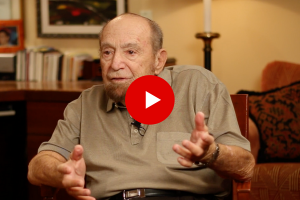3 Easy Things to Try to Immediately Improve Your Mood
 There are a million things that can cause our mood to rise and fall throughout any given day. Whether or not we show it, and no matter how hard we work to keep calm and carry on, our emotional responses can run widely outside of our control.
There are a million things that can cause our mood to rise and fall throughout any given day. Whether or not we show it, and no matter how hard we work to keep calm and carry on, our emotional responses can run widely outside of our control.
It’s an unavoidable and entirely human thing to react to what goes on around us. Our feelings don’t have to be rational to show up.
They’re instinctual, immediate, and can trickily be triggered by our past. They can make perfect sense or puzzle us when they arise.
Adding to their mystery are the feelings on top of feelings – the harsh judgments that flood in from our own inner critic, for example, the guilt we feel for being angry at our 6-year-old for throwing a monster fit over screen time. The embarrassment we feel over our disappointment when a date falls through. The resentment we experience when we feel anxious and overworked either at home or in the office. The shame we have around our sadness when it’s particularly close to the surface for no particular reason.
The complexity of our daily emotions makes it hard to suggest a one-size-fits-all approach to feeling better.
However, there are some ongoing practices we can adopt that orient us toward more resilience. When asked for a more immediate method for what to do to get out of a bad mood, these are pretty much the three main things I advise:
1. Embrace Self-Compassion
The first thing we need to do is suspend any judgment around our feelings. As I said, our immediate emotions are largely outside of our control. This doesn’t mean they have to overpower us or that we can justify our behavior because of them, but it does mean that we shouldn’t be cruel or critical toward ourselves for having them.
When we have a big reaction, we should try to meet that reaction with self-compassion. Self-compassion, as defined by leading researcher Kristin Neff, comprises three things:
- Self-kindness over self-judgment
- Mindfulness instead of over-identification with thoughts and feelings
- Common humanity over isolation and feeling different and alone
Self-kindness means meeting ourselves where we are, having compassion for the fact that we’re struggling, and offering ourselves time, space, and patience around our emotions.
Mindfulness, which I’ll get into more later, is all about letting our thoughts and feelings be there without over-attaching to them or tending to them like fires we need to put out immediately. Having a more mindful approach helps us avoid falling into a pattern of rumination or a feeling of being totally overwhelmed.
Accepting our common humanity is a way of seeing our suffering as part of a broader human experience. We’re not alone or singled out in our struggles. Many people have been where we are, and we, like them will get through it. Common humanity helps us extend the same compassion we’d have for others to ourselves, but it also helps us avoid victimization or a sense that we’re different in some way that makes our situation worse than everyone else’s.
What this all boils down to is essentially treating ourselves the way we would a friend going through the same thing. People are highly prone to self-evaluation and tend to have a harder time accepting themselves where they’re at. This applies as much to our mood as anything else. We tend to not have a lot of patience for our own ups and downs.
By instantly meeting our mood with self-compassion, we curtail both the self-pity and self-hatred that often accompanies our feelings. Instead, we treat ourselves with kindness and accept these feelings as part of our very human experience.
2. Try Mindfulness Exercises
Because self-compassion is more an attitude than an action, it can sometimes seem a little vague or easier said than done. For that reason, I like to dive a little deeper into one of its components. Practicing mindfulness can be a powerful way to not get too attached to each and every fleeting feeling that comes our way.
Mindfulness can be practiced through meditation, but it’s also something we can connect with in specific moments throughout our day. While focusing on breathing or predictable, repetitive actions is helpful, the basic idea is to allow our thoughts and feelings to come and go without judgment. We can think of each feeling like a ship passing along the ocean. We can watch it make its way across the horizon, but think of ourselves more like an island, allowing the thought to pass. We can calmly ignore the impulse to jump aboard every ship and get carried away, or the opposite, where we try and run away from our feelings and shut them out. This paradoxically keeps them stuck.
Emotions come and go, and their intensity rises and falls much like the tide. The more we can be curious and accepting of what we’re going through, the more we allow the feeling to run its natural course. Mindfulness helps us stay in our bodies, focusing on things like breathing in and out or putting one foot in front of the other. We may try connecting with each of our five senses or a quick practice like 4-7-8 breathing.
The main thing to remember is that there are options available to us in moments when we feel overwhelmed or overpowered, and our mood plummets. These simple-seeming practices can help us embrace (and actually believe) the expression that “feelings aren’t facts.” Not everything our brain tells us to be anxious or upset about is actually worth our time and energy. Mindfulness helps bring us back to ourselves by cultivating a curious and open attitude toward our reactions that doesn’t allow these reactions to define us or take over our entire outlook.
3. Commit to a Daily Gratitude Practice
I probably tend to sound like a broken record when I talk about the benefits of gratitude. Yet, I can’t overstate the rewards of connecting to gratitude on a consistent basis to both our physical and mental health. Research is continually showing that taking the time to focus on what we’re grateful for is a powerful way to feel happier and more fulfilled. And I’ve seen this data proven first-hand in friends and family, as well as patients, who’ve tried a daily gratitude practice or simply made adjustments to their mindset to think about what they’re thankful for rather than what they resent in a given situation.
So, what are some ways we can make being grateful a tangible daily action item on an already long to-do list? My suggestion is to find a method that works for you. That may be five minutes to merely meditate on the things that we appreciate or taking time to make a list in a journal. It may mean actually thanking someone for something, as the act of acknowledgment itself can make us feel more grounded and connected.
Reflecting on what we’re thankful for has an amazing way of shifting our outlook from pessimistic to positive.
It doesn’t make all the things that we’re upset about go away, but it may transform the way we look at them by softening us, making us feel more ourselves, and even more resilient. With plenty of things that could inspire cynicism being thrown our way on a daily basis, gratitude is a secret tool for any aspiring optimist (or anyone who wants to keep a good balance of lightness in their attitude and strength in their stamina for facing life’s inevitable challenges).
If you’re still not sold on putting gratitude into practice, here are some of the findings on its benefits:
-
Greater happiness
-
More optimism and positive emotions
-
New and lasting relationships
-
Better health
-
More progress toward personal goals
-
Fewer aches and pains
-
More alertness and determination
-
Increased generosity and empathy
-
Better sleep
-
Improved self-esteem
Ultimately, our emotional reactions are a part of us, and our goal isn’t to bury or fight every mood that we experience. A change in our mood can give us valuable information into something we need to reflect on, address, or alter in our lives. However, changing our approach to how we handle these shifts in our mood can be an empowering process.
The goal behind each of these aforementioned steps is to help us feel like, when it comes to our feelings, we can be curious without being judgmental, open without being overtaken, and compassionate without putting ourselves down or feeling sorry for ourselves. Slowing down just a little bit to remember self-compassion, use mindfulness, and turn to gratitude can honestly change our perspective and improve our mood. And there’s simply no downside to trying any of these practices.
Tags: bad mood, get out of a bad mood, good modd, gratitude, happiness, how to get in a good mood, how to get out of a bad mood, improve your mood, mindfulness, mood, optimism, self-compassion, thankful, thankfulness3 Comments
Comments are closed.









Love all your articles, thank you
Thanks so mush wonderful advice 🙏👍
Thank you for the reset that I need. I’m unfortunately not happy with my current partner, his commitment level to me and my current job. I have generally lived my job but am seeing so much misogyny and patriarchy that I can’t stand it anymore. I am working on Exit strategy with work which would include early retirement and thinking about leaving my current relationship. It is a lot to manage at the moment and I want the way I used to be back and thriving.